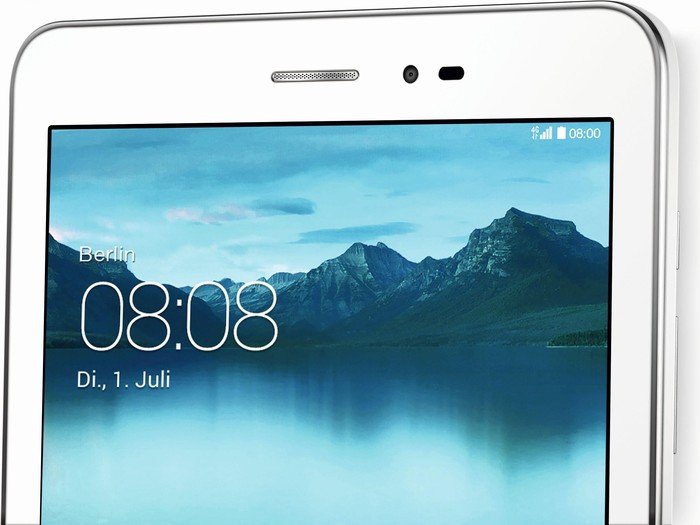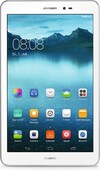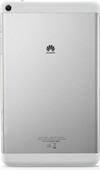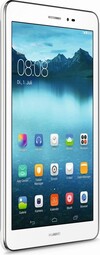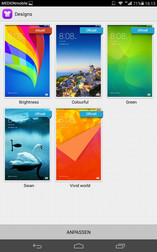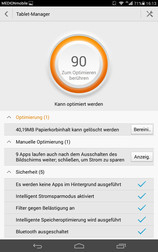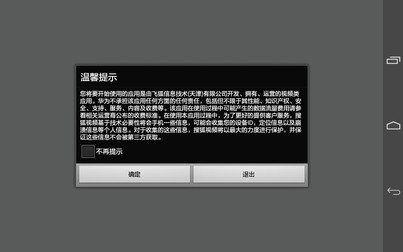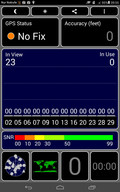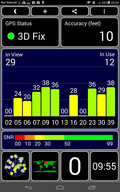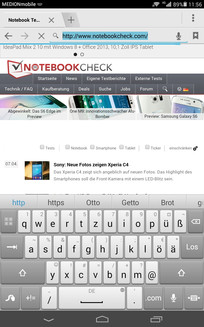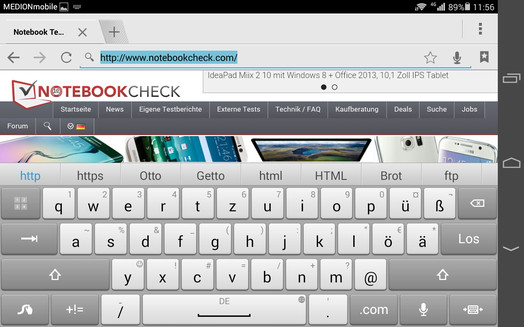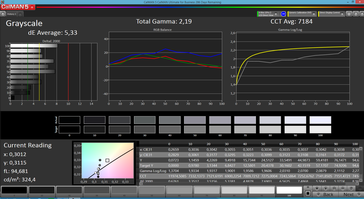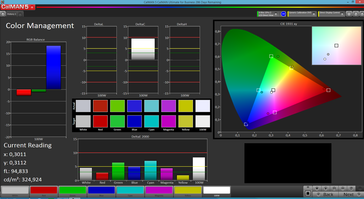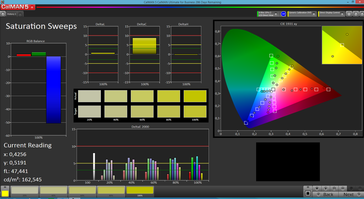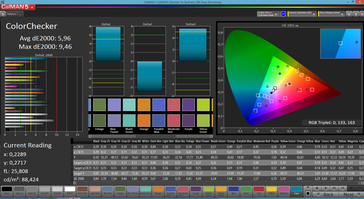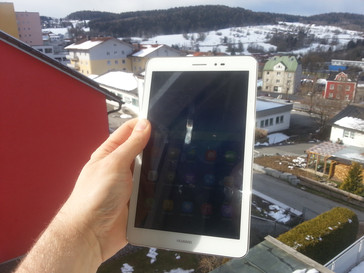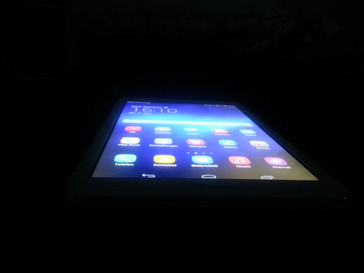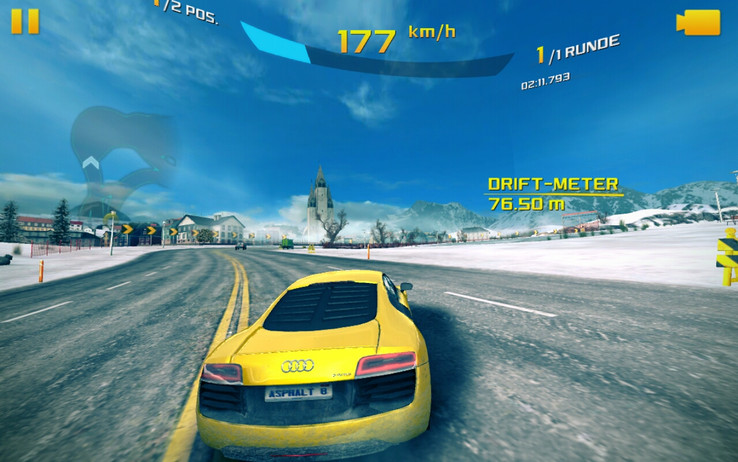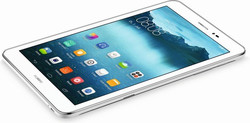Huawei MediaPad T1 8.0 LTE Tablet Review
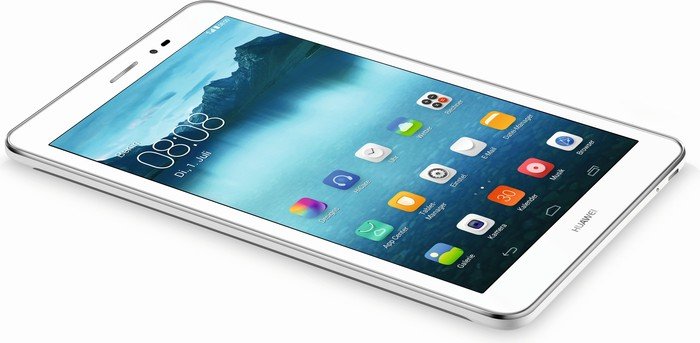
For the original German review, see here.
More and more manufacturers are now following the example Samsung set with its Galaxy Tab years ago for their tablets: A phone feature in 8-inch or even 10.1-inch devices. Huawei does not want to fall behind and launches an affordable LTE tablet dubbed MediaPad T1 8.0. The buyer only has to shell out just below 220 Euros (~$233) for mobile Internet and telephony. What else is offered? The screen only has a resolution of 1280 x 800 pixels, but it is an IPS screen. 16 GB of storage and two relatively high-resolution cameras are also included.
The MediaPad T1 8.0 has to compete against other 8-inch tablets from this price range. However, none of them have an LTE module: The LG G Pad 8.0, Asus VivoTab 8, and Lenovo Tab S8 are the alternatives.
Case
Huawei offers a classic tablet design with its MediaPad T1 8.0: silver plastic back cover, white front, chrome-colored rim - greetings from the iPad. The design of Huawei's MediaPad T1 8.0 is not really unique, but it is nice to hold and also fairly slim with a height of 7.9 millimeters. The weight of 360 grams is slightly higher than that of the comparison devices, though.
The casing's stiffness is satisfactory. However, pressure applied to all sides is passed on to the screen and becomes visible as waves in the liquid crystals. Furthermore, the device crackles under pressure.
An LTE module naturally costs money, and Huawei obviously had to make cutbacks in other places: working memory, screen resolution, and even the storage devices are mostly more generous in the comparison devices. A user of Huawei's MediaPad T1 8.0 has to be satisfied with 1 GB of working memory and 16 GB of storage capacity, which shrinks to 11.27 GB of available storage due to the operating system. The device supports micro-SDHC cards with up to 32 GB for storage expansion. Users have reported on the Internet that 64 GB cards can also be read.
USB OTG that would, for example, allow connecting a USB flash drive to the tablet's micro-USB port via an adapter is not available. NFC is not installed, either.
Software
Android 4.4.4 is the underlying operating system. Huawei's Emotion UI 2.3 covers it. It has not yet been confirmed whether an update to Android 5 will be made available for the tablet. Huawei has been rather slow with launching a new operating system on its devices in the past. Of course, some effort is needed for modifying Emotion UI to the new design and new version.
It is basically possible to work quite fast with the preloaded operating system. Android veterans will soon manage because the modifications of the Emotion UI are sooner superficial in nature. Some freeware is found on the tablet, for example the "Tablet Manager" that helps save energy, clean the memory or filtering spam. "Cast" is a screen-sharing tool and documents can be created or viewed directly on the tablet with "WPS Office". A few apps, such as "Baidu" or "Autonavi" are in Mandarin, which will not be very helpful for western buyers. However, most apps can be uninstalled and there is barely any adware on the tablet.
Communication & GPS
The Wi-Fi module supports networks in the 802.11 a/b/g/n standards, and thus also the 5 GHz band. The reception is rather mediocre. Half the signal was still displayed at a distance of ten meters and through three walls, and websites opened noticeably slower.
The most significant unique selling point of the MediaPad T1 8.0 LTE is certainly the cellular phone network that enables making calls with the device and provides high-speed Internet via GPRS, UMTS or LTE. A maximum downstream speed of 150 Mbps and upstream speeds of 50 Mbps are possible. The reception is very good. We had the full LTE signal even indoors using the rather moderately developed German E-Plus net.
The GPS module does not do a bad job, either. Although it could not track us indoors, it determined our position outdoors with an accuracy of four meters.
Telephone
Seeing that the MediaPad T1 8.0 can be used for making calls, this feature naturally has to be examined closer in our test. The phone app is, like in smartphones, positioned in the menu's lower row as an always visible app icon. Tapping it leads to a clearly arranged phone app with keypad, quick-dial function, contacts, and favorites. Annoying contacts can be blocked when desired.
The call quality is very decent because the speaker is the earpiece at the same time. However, its isolation to the environment could be better as the surroundings hear a lot from the contact even at a normal volume. The microphone is also good; our contact perceived us as loud and clear. The speaker proved to be strong in hands-free mode, and the microphone was also reliable.
Cameras & Multimedia
Huawei did not save on the cameras. A 5-megapixel lens without flash but with auto-focus is on the rear. The image quality and particularly the color reproduction are appealing. However, frayed outlines (see scene 1 by the banana) and pixelated color areas (scene 2, the sit 'n' bounce) become visible when zoomed. The camera is generally overall quite suitable for snapshots.
Selfies shot with the 2 MP front-facing camera are quite decent, as well. However, the tablet has to be kept very steady so that the pictures do not blur. We liked the extended software that enables adapting the image focus or provides tips for the perfect selfie.
Input Devices & Controls
Both the stock keyboard from Google and Swype for Huawei are available as keyboard options. Other keyboards can always be downloaded and installed from the Play Store. Swiping functioned very reliably right from the outset, and we did not have any problems with language settings like in Honor's Holly. It is ultimately a matter of preference which keyboard is used - we could work very well with both preloaded keyboards.
The capacitive touchscreen even responded to light touches reliably, and it is sensitive up to the corners so that we did not have problems with it, either.
Display
The 8-inch screen's resolution of 1280x800 pixels is class average, but Lenovo's Tab S8 proves that even a Full HD resolution is possible in this price range. Although our review sample's average brightness of 301 cd/m² cannot compete with the comparison tablets, it is still fairly bright. The illumination of 87% is homogeneous enough to minimize visible brightness differences in large color areas.
| |||||||||||||||||||||||||
Brightness Distribution: 87 %
Center on Battery: 324 cd/m²
Contrast: 831:1 (Black: 0.39 cd/m²)
ΔE ColorChecker Calman: 5.96 | ∀{0.5-29.43 Ø4.77}
ΔE Greyscale Calman: 5.33 | ∀{0.09-98 Ø5}
Gamma: 2.19
CCT: 7184 K
| Huawei MediaPad T1 8.0 LTE Adreno 306, 410 MSM8916, 16 GB eMMC Flash | LG G Pad 8.0 V480 Adreno 305, 400 MSM8226, 16 GB eMMC Flash | Asus VivoTab 8 M81C-1B010W HD Graphics (Bay Trail), Z3745, 32 GB eMMC Flash | Lenovo Tab S8 HD Graphics (Bay Trail), Z3745, 16 GB eMMC Flash | |
|---|---|---|---|---|
| Screen | -4% | -4% | 40% | |
| Brightness middle (cd/m²) | 324 | 333 3% | 352 9% | 418 29% |
| Brightness (cd/m²) | 301 | 311 3% | 340 13% | 401 33% |
| Brightness Distribution (%) | 87 | 85 -2% | 91 5% | 85 -2% |
| Black Level * (cd/m²) | 0.39 | 0.54 -38% | 0.45 -15% | 0.22 44% |
| Contrast (:1) | 831 | 617 -26% | 782 -6% | 1900 129% |
| Colorchecker dE 2000 * | 5.96 | 4.64 22% | 5.84 2% | 4.19 30% |
| Greyscale dE 2000 * | 5.33 | 4.78 10% | 7.21 -35% | 4.26 20% |
| Gamma | 2.19 100% | 2.63 84% | 2.43 91% | 2.41 91% |
| CCT | 7184 90% | 6458 101% | 6140 106% | 6246 104% |
| Color Space (Percent of AdobeRGB 1998) (%) | 38 |
* ... smaller is better
The black level of 0.39 cd/m² is good just like the resulting contrast ratio of 831:1. The color reproduction on the screen is decent, but the colors could perhaps be a bit more vivid. Particularly text areas make it obvious that the resolution could be higher.
We examine the screen using CalMAN software and the spectrophotometer to ascertain more details about the color reproduction. We noticed a light bluish cast in the grayscale levels with the naked eye. The increased average color temperature also points to that. Pure white and cyan as well as green hues shift most from the ideal rate of the sRGB reference color space.
The glare screen and the sooner middling brightness make outdoor use a problem. It looks better indoors or in the shade.
Performance
Huawei installs a SoC with four cores in the MediaPad T1 8.0. To be more precise, it is a Qualcomm Snapdragon 410 MSM8916 with a clock rate of 1.4 GHz. The mid-range SoC is also found in Samsung's Galaxy A5, for example, and it should provide enough power even for slightly more demanding apps. In any case, we could navigate smoothly in the operating system of Huawei's MediaPad T1 8.0; very short waiting times for reloading were only very rare. The review sample's processing power clearly surpasses the LG G Pad 8.0, but it is very clearly outperformed by both Asus' VivoTab 8 and Lenovo's Tab S8 with an Intel Atom SoC. A very similar picture is seen in the browser benchmarks.
The MediaPad T1 8.0 lags slightly behind the comparison devices in 3D computation; it is primarily behind tablets based on Intel Atom SoCs. The Adreno 306 graphics card should basically be sufficient for most games using the screen's resolution.
| Geekbench 3 | |
| 32 Bit Single-Core Score (sort by value) | |
| Huawei MediaPad T1 8.0 LTE | |
| LG G Pad 8.0 V480 | |
| Asus VivoTab 8 M81C-1B010W | |
| Lenovo Tab S8 | |
| 32 Bit Multi-Core Score (sort by value) | |
| Huawei MediaPad T1 8.0 LTE | |
| LG G Pad 8.0 V480 | |
| Asus VivoTab 8 M81C-1B010W | |
| Lenovo Tab S8 | |
| Linpack Android / IOS | |
| Single Thread (sort by value) | |
| Huawei MediaPad T1 8.0 LTE | |
| LG G Pad 8.0 V480 | |
| Multi Thread (sort by value) | |
| Huawei MediaPad T1 8.0 LTE | |
| LG G Pad 8.0 V480 | |
| BaseMark OS II | |
| Overall (sort by value) | |
| LG G Pad 8.0 V480 | |
| System (sort by value) | |
| LG G Pad 8.0 V480 | |
| Memory (sort by value) | |
| LG G Pad 8.0 V480 | |
| Graphics (sort by value) | |
| LG G Pad 8.0 V480 | |
| Web (sort by value) | |
| LG G Pad 8.0 V480 | |
| GFXBench (DX / GLBenchmark) 2.7 | |
| T-Rex Onscreen (sort by value) | |
| Huawei MediaPad T1 8.0 LTE | |
| LG G Pad 8.0 V480 | |
| Lenovo Tab S8 | |
| 1920x1080 T-Rex Offscreen (sort by value) | |
| Huawei MediaPad T1 8.0 LTE | |
| LG G Pad 8.0 V480 | |
| Lenovo Tab S8 | |
| GFXBench 3.0 | |
| on screen Manhattan Onscreen OGL (sort by value) | |
| Huawei MediaPad T1 8.0 LTE | |
| LG G Pad 8.0 V480 | |
| Lenovo Tab S8 | |
| 1920x1080 1080p Manhattan Offscreen (sort by value) | |
| Huawei MediaPad T1 8.0 LTE | |
| Lenovo Tab S8 | |
| Mozilla Kraken 1.1 - Total (sort by value) | |
| Huawei MediaPad T1 8.0 LTE | |
| LG G Pad 8.0 V480 | |
| Asus VivoTab 8 M81C-1B010W | |
| Lenovo Tab S8 | |
| Google V8 Ver. 7 - Google V8 Ver. 7 Score (sort by value) | |
| Huawei MediaPad T1 8.0 LTE | |
| LG G Pad 8.0 V480 | |
| Sunspider - 1.0 Total Score (sort by value) | |
| Huawei MediaPad T1 8.0 LTE | |
| LG G Pad 8.0 V480 | |
| Asus VivoTab 8 M81C-1B010W | |
| Lenovo Tab S8 | |
| Octane V2 - Total Score (sort by value) | |
| Huawei MediaPad T1 8.0 LTE | |
| LG G Pad 8.0 V480 | |
| Asus VivoTab 8 M81C-1B010W | |
| Lenovo Tab S8 | |
| AndroBench 3-5 | |
| Sequential Read 256KB (sort by value) | |
| LG G Pad 8.0 V480 | |
| Lenovo Tab S8 | |
| Sequential Write 256KB (sort by value) | |
| LG G Pad 8.0 V480 | |
| Lenovo Tab S8 | |
| Random Read 4KB (sort by value) | |
| LG G Pad 8.0 V480 | |
| Lenovo Tab S8 | |
| Random Write 4KB (sort by value) | |
| LG G Pad 8.0 V480 | |
| Lenovo Tab S8 | |
* ... smaller is better
Games
It is generally possible to play even more sophisticated 3D games, such as Asphalt 8: Airborne in the screen's resolution. However, it is not completely lag-free. We noticed stutters in just medium details settings. More basic games like Angry Birds normally run without problems, though.
Emissions
Temperature
The temperature barely increased even during full load. We measured a maximum of 32.3 °C on the front in the camera's area. It was a maximum of 29.7 °C in the same place in idle mode. The MediaPad T1 8.0 never got unpleasantly warm at any time of our tests.
(+) The maximum temperature on the upper side is 32.3 °C / 90 F, compared to the average of 33.7 °C / 93 F, ranging from 20.7 to 53.2 °C for the class Tablet.
(+) The bottom heats up to a maximum of 32.2 °C / 90 F, compared to the average of 33.2 °C / 92 F
(+) In idle usage, the average temperature for the upper side is 26.7 °C / 80 F, compared to the device average of 30 °C / 86 F.
Speaker
The speaker was already a great pleasure in calls, and it is very convincing even when playing music or movie soundtracks. That is primarily because it is located on the front, which is fundamentally a better position than on the rear where many tablets and smartphones have their speakers.
The sound is balanced and even bass is audible and palpable. The maximum volume is very high; setting the volume to half is absolutely sufficient. The sound is very present. The speaker occasionally distorts somewhat only in very high pitches. The user will soon notice that it is just a little speaker after all in very multilayered playback. Simpler music pieces sound good.
Energy Management
Power Consumption
Huawei's MediaPad T1 8.0 LTE proved quite frugal with its power consumption. Comparable devices either need just as much energy (Asus VivoTab 8 with Windows 8.1) or more (Lenovo Tab S8). Our review sample only consumed a maximum of 2.5 watts when idling. Its absolute maximum was 5.4 watts. The latter devices both consume over 7 watts.
| Off / Standby | |
| Idle | |
| Load |
|
Key:
min: | |
Battery Runtime
Huawei's MediaPad T1 8.0 LTE is roughly on par with the comparison devices despite the decent consumption rates and the relatively high battery capacity of 18.2 watt hours. It does not really manage to outrun them. 10:33 hours of Wi-Fi browsing is, however, a very practice-suitable time. Especially since the standby time will definitely be longer than one week based on our experience.
| Huawei MediaPad T1 8.0 LTE Adreno 306, 410 MSM8916, 16 GB eMMC Flash | LG G Pad 8.0 V480 Adreno 305, 400 MSM8226, 16 GB eMMC Flash | Asus VivoTab 8 M81C-1B010W HD Graphics (Bay Trail), Z3745, 32 GB eMMC Flash | Lenovo Tab S8 HD Graphics (Bay Trail), Z3745, 16 GB eMMC Flash | |
|---|---|---|---|---|
| Battery runtime | 16% | -8% | ||
| Reader / Idle (h) | 25.8 | 30 16% | 23.8 -8% | |
| WiFi v1.3 (h) | 10.6 | |||
| H.264 (h) | 12.2 | |||
| WiFi (h) | 10.9 | 5.2 | 10.2 | |
| Load (h) | 5.4 | 5.3 |
Pros
Cons
Verdict
Huawei's MediaPad T1 8.0 LTE is definitely a good deal: Phone functionality and the LTE module are sooner only found in more expensive models. Although the configuration of just 1 GB of RAM and 16 GB of storage are not exceptional, it can still just keep up with the category standard. We very much liked the swift GPS module, the plain yet fairly slim casing, and the decent software configuration. Apps with Chinese characters are, however, rather useless for the western market.
Negative aspects are not easy to find. The screen could perhaps be brighter and have a higher resolution, and the battery life is only middling. More might have been possible considering the tablet's relatively high weight. Users who want to play a game without any lags should buy a different tablet.
However, those are rather small details. Huawei's MediaPad T1 8.0 is recommended to anyone looking for an unobtrusive, smooth-running tablet with phone functionality and mobile Internet.
Huawei MediaPad T1 8.0 LTE
- 04/07/2015 v4 (old)
Florian Wimmer




